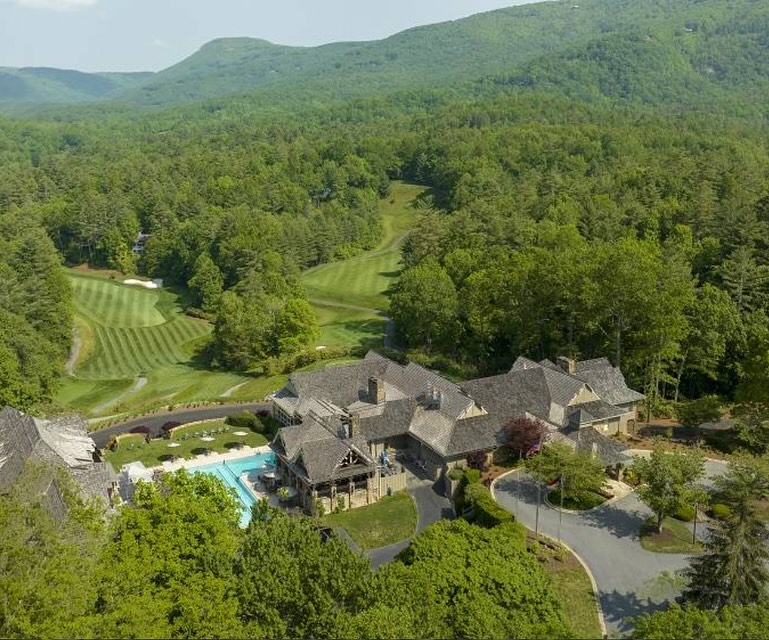
The first time you stand on Burlingame’s elevated tee boxes, looking out over the Blue Ridge Mountains with the morning mist rolling through the valleys below, you realize this isn’t your typical golf course. Playing at elevations between 3,000 and 3,500 feet brings challenges that seaside and flatland courses simply can’t match.
Golf in the mountains requires a completely different mindset. The ball flies farther in thin air, but crosswinds can grab it mid-flight and send it places you never intended. Weather can change from sunny and calm to breezy and cool in the span of three holes. And that gorgeous mountain backdrop? It can actually work against you when you’re trying to judge distances.
Here’s what every golfer needs to know about playing smart in the mountains.

Understanding Altitude’s Impact on Ball Flight
The thin air at elevation changes everything about how your ball travels. At Burlingame’s altitude, you can expect your shots to carry roughly 8-12% farther than they would at sea level. That 150-yard shot with a 7-iron suddenly becomes a 165-yard shot, and you better account for it.
But here’s the catch most golfers miss: while your ball goes farther, it also flies higher and stays in the air longer. That extra hang time means wind has more opportunity to affect your shot. A gentle breeze that barely registers down in the valleys can push your ball 15-20 yards off target up here.
Temperature plays a role too. Cold mountain mornings mean the ball won’t travel as far, even with the altitude advantage. By afternoon, when the sun warms things up, you might need to club down again. It’s not unusual to use different clubs for the same shot depending on the time of day.
Reading Mountain Winds Like a Local
Wind in the mountains doesn’t behave like wind anywhere else. Down in flat country, you might deal with a steady breeze from one direction. Up here, wind swirls, gusts, and changes direction based on the terrain around each hole.
Watch the trees before every shot. Not just the ones near you, but the ones across the fairway and around the green. If you see trees swaying differently in various spots, you’re dealing with multiple wind patterns on the same hole. That’s when smart club selection becomes crucial.
The valleys between ridges create wind tunnels that can grab your ball and move it sideways. The elevated greens we’re famous for often sit in spots where wind swirls in ways that don’t match what you feel standing on the tee. Pay attention to the flag, but also look for other indicators like the way the rough grass is moving or how the sand in bunkers appears to be drifting.
Here’s a tip from our members who’ve been playing mountain golf for years: always err on the side of staying below the hole on elevated greens. Fighting wind and elevation changes makes uphill putts much more manageable than trying to control downhill putts in swirling air.
Smart Club Selection for Mountain Conditions
Club selection in the mountains isn’t just about distance; it’s about ball flight and control. Higher-lofted clubs become your friends because they help you control trajectory in windy conditions. That 8-iron might be the right choice even when you’d normally hit a 6-iron at sea level.
When facing into mountain winds, resist the temptation to swing harder. Instead, take one or even two clubs more and make a smooth, controlled swing. The ball will still get there, but you’ll maintain better accuracy. Fighting the wind with muscle usually ends with your ball in places you don’t want to find it.
Downwind shots require the opposite approach. Take less club than you think you need and focus on a smooth tempo. The combination of thin air and wind assistance can send balls flying way past your intended target. Our members learn quickly that the beautiful mountain views beyond our greens can be expensive to visit.
For crosswind shots, aim for the wider parts of fairways and greens rather than trying to hit precise targets. Mountain golf rewards smart, conservative play more than it rewards heroic shots. There’s always another hole to make up ground.
Weather Changes Everything
Mountain weather can shift faster than you can play three holes. You might start your round in shorts and a polo, then find yourself wishing you’d brought a jacket by the turn. Smart mountain golfers always pack layers.
Morning rounds often start with heavy dew that affects how balls roll on fairways and greens. Early morning shots tend to fly shorter distances in the cool, dense air, but they also roll less when they land. Plan accordingly.
Afternoon storms build quickly in the mountains. Those beautiful puffy clouds you see on the first tee can become thunderheads by the time you reach the back nine. Keep an eye on weather patterns and don’t be afraid to head to the clubhouse if conditions deteriorate. Mountain storms can be dangerous, and no round of golf is worth taking unnecessary risks.
Course Management in Mountain Settings
The visual tricks that mountain courses play on golfers are legendary. What looks like a short iron to an elevated green might actually require a hybrid or fairway wood. Conversely, downhill shots to greens below you can require much less club than the yardage suggests.
Our advice? Trust your yardages more than your eyes, but also factor in the conditions. GPS and rangefinders help, but they can’t account for wind, elevation change, and atmospheric conditions all at once. That’s where local knowledge and experience become invaluable.
Play to the center of greens more often than you would on flatter courses. Mountain greens often have dramatic slopes and tiers that become much harder to navigate when you’re putting from the edges. A 20-foot putt from the center beats a 10-foot putt across multiple breaks any day.

Learning from Local Experience
The best mountain golfers are the ones who learn to work with conditions rather than fighting them. Our members who consistently score well up here share a common trait: they’re patient with themselves while they adapt to mountain golf.
Every round teaches you something new about how weather and elevation affect your game. Some days you’ll feel like you can’t miss; others will humble you quickly. That’s mountain golf. The key is accepting that your flatland distances and club selections might not apply here.
Talk to our staff and longtime members. They’ve seen every possible combination of mountain conditions and can offer insights that save you strokes. Most importantly, they understand that mountain golf isn’t about overpowering the course; it’s about playing smart and enjoying the incredible setting.
The mountains will challenge your game in ways you haven’t experienced before. But once you learn to read the wind, account for elevation, and respect the weather, you’ll discover why so many golfers consider mountain golf the ultimate test.
Ready to test your skills against the mountains? Contact Burlingame Country Club at (828) 966-9200 to schedule your round and experience championship golf at elevation. Discover why our members call it “The Best of Times” in Western North Carolina.
